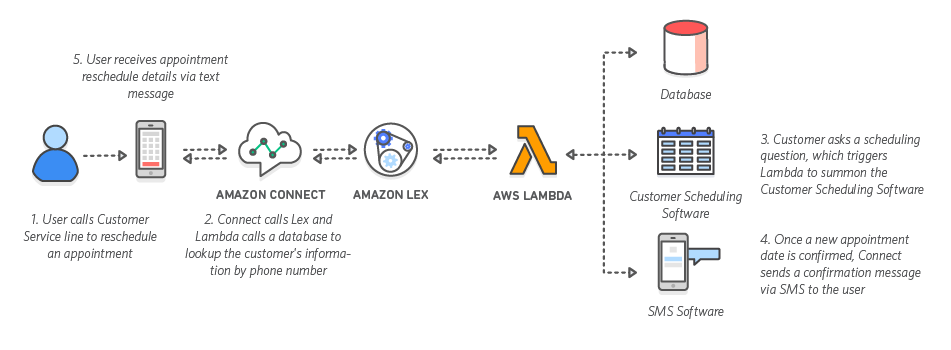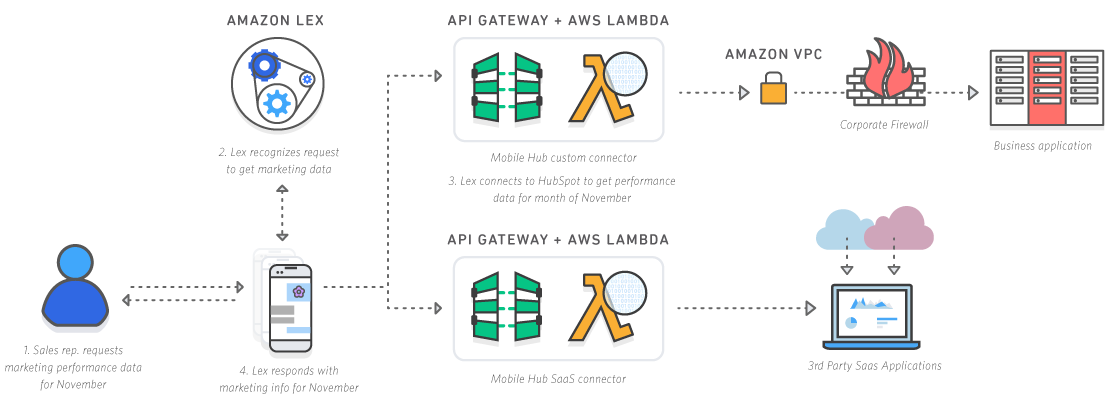We have ushered into an era where technology is making its way into every aspect of our lives. Fields of Artificial Intelligence, Machine Learning, Natural Language Processing, Computer Vision, etc. are being extensively studied and applied to make our lives easier and more convenient.
We now have the popular Siri, Cortana and Google's Voice Assistant. What started as simple chatbots for basic speech recognition have paved the way for much more sophisticated voice assistants that can now do almost anything for you, from answering basic questions that you have to schedule meetings. They can even pick up upcoming trips from your email and notify you the status of your flight, courtesy learning techniques and algorithms that are improving by the day. Various websites now have chatbots that provide customer service and assistance. It is thus clear that there is a growing understanding and need of chatbots to be integrated into our day-to-day operations.
Amazon's Lex is taking the concept of chatbots to the next level. It provides a voice and text based conversational interface that can be integrated into the app. Combining the deep learning technologies of Amazon Alexa (their home automation system), Lex enables developers to quickly build smart and sophisticated chatbots. The best part? The developers do not need to worry about handling the infrastructure, as Lex scales automatically.
Amazon Lex brings in unprecedented seamless integration and deployment for a diverse range of applications:
We now have the popular Siri, Cortana and Google's Voice Assistant. What started as simple chatbots for basic speech recognition have paved the way for much more sophisticated voice assistants that can now do almost anything for you, from answering basic questions that you have to schedule meetings. They can even pick up upcoming trips from your email and notify you the status of your flight, courtesy learning techniques and algorithms that are improving by the day. Various websites now have chatbots that provide customer service and assistance. It is thus clear that there is a growing understanding and need of chatbots to be integrated into our day-to-day operations.
Amazon's Lex is taking the concept of chatbots to the next level. It provides a voice and text based conversational interface that can be integrated into the app. Combining the deep learning technologies of Amazon Alexa (their home automation system), Lex enables developers to quickly build smart and sophisticated chatbots. The best part? The developers do not need to worry about handling the infrastructure, as Lex scales automatically.
Amazon Lex brings in unprecedented seamless integration and deployment for a diverse range of applications:
1. Call center bots
Call center bots replace the need of an agent in call centers, and can perform the tasks of changing passwords, requesting balance of an account, etc. These chatbots use automatic speech recognition and Natural Language Processing to understand the user and maintain dialogue, dynamically changing responses based on the conversation.
2. Application bots
Mobile app developers can add a voice or text chat interface to their apps so that customers can perform tasks like ordering food, calling cabs, booking appointments, etc. with ease. Amazon Lex integrates with Amazon Cognito for control of users, authentic and sync across all devices.
3. Enterprise Productivity Bots
Lex can also build enterprise chatbots that streamline common work activities that help improve organizational efficiencies. For example, employees can check their sales data from Salesforce, marketing performance from HubSpot, and customer service status from Zendesk, directly from their chatbots within minutes.
4. Internet of Things
Bringing together chatbots with IoT applications such as cars, devices, appliances and wearables can open up a plethora of opportunities.
Amazon Lex is currently in use by the best of their respective industries, like NASA, American Heart Association, Infor, CapitalOne, HubSpot, etc.
The performance of these chatbots can be further improved by learning algorithms that help them understand the context better and resolve ambiguities.
Thus, Amazon Lex brings a powerful and promising technology that has tremendous potential to change the way businesses and communication happens. Interactive chatbots can make it possible for even illiterates, elderly, and visually challenged people to get their work done effortlessly. Amazon Lex helps to make this world a better place.





Comments
Post a Comment